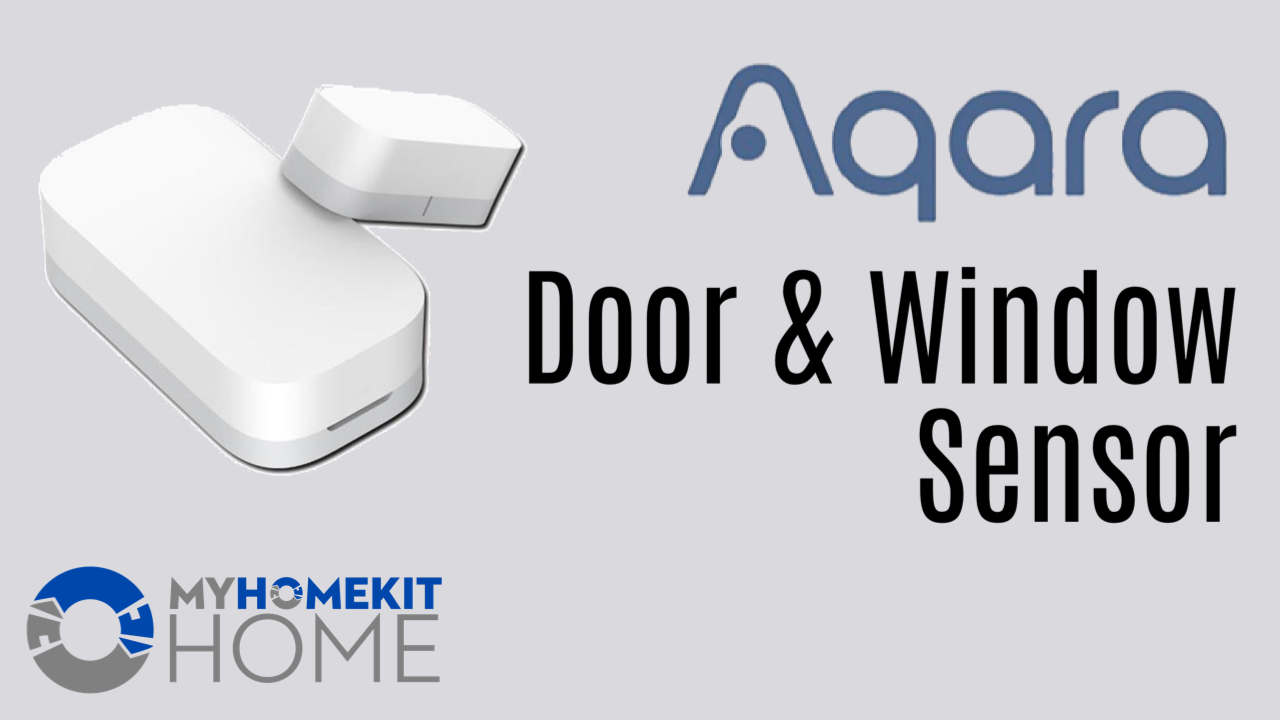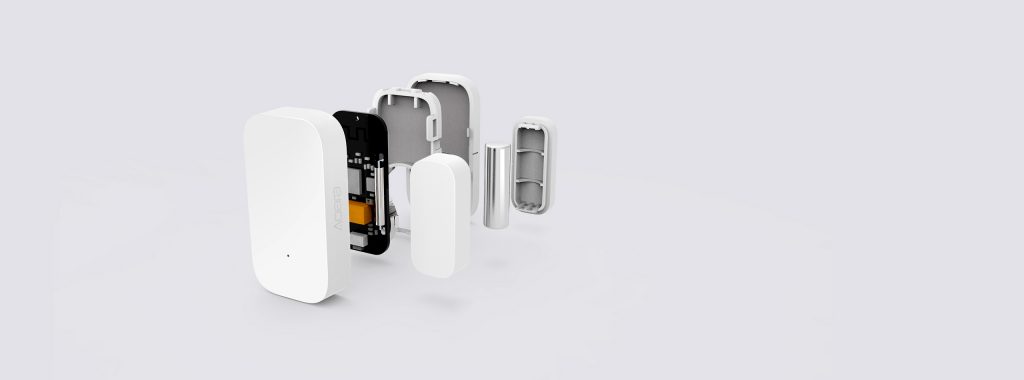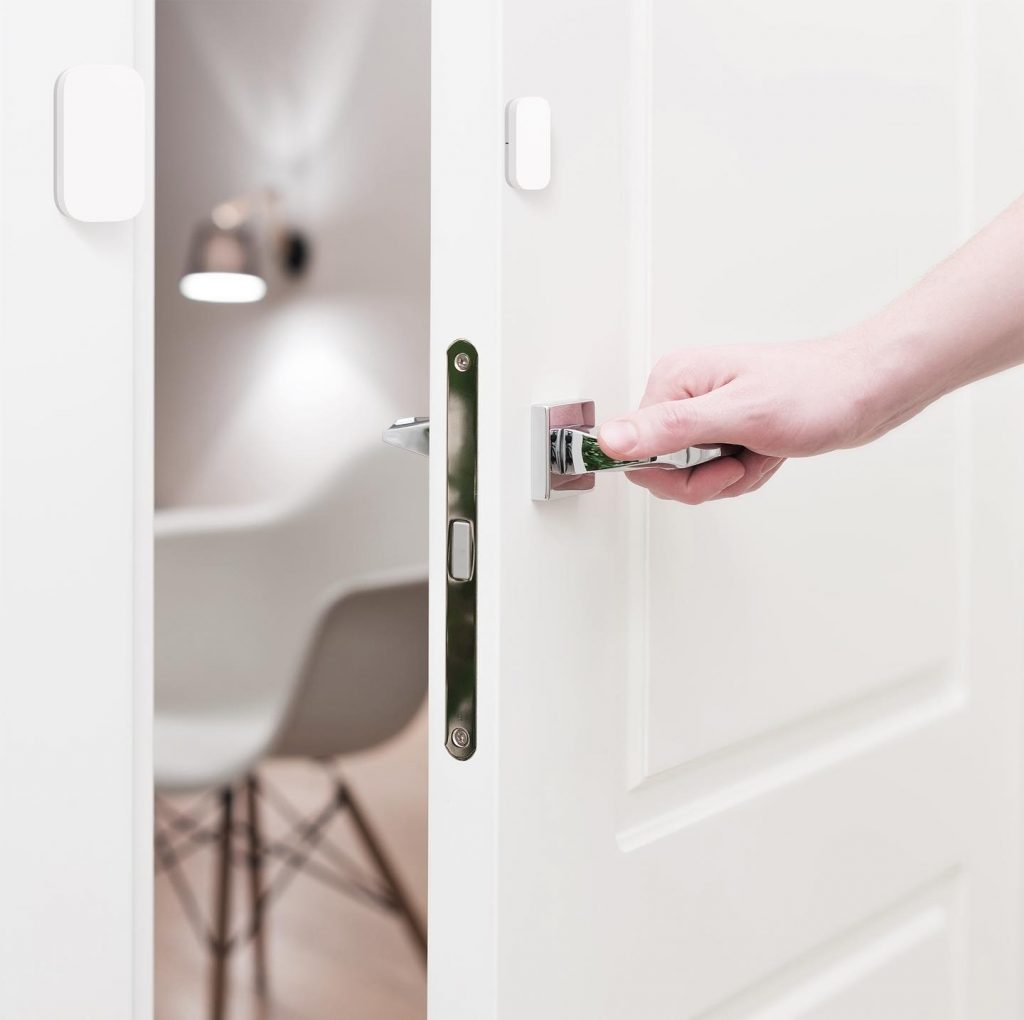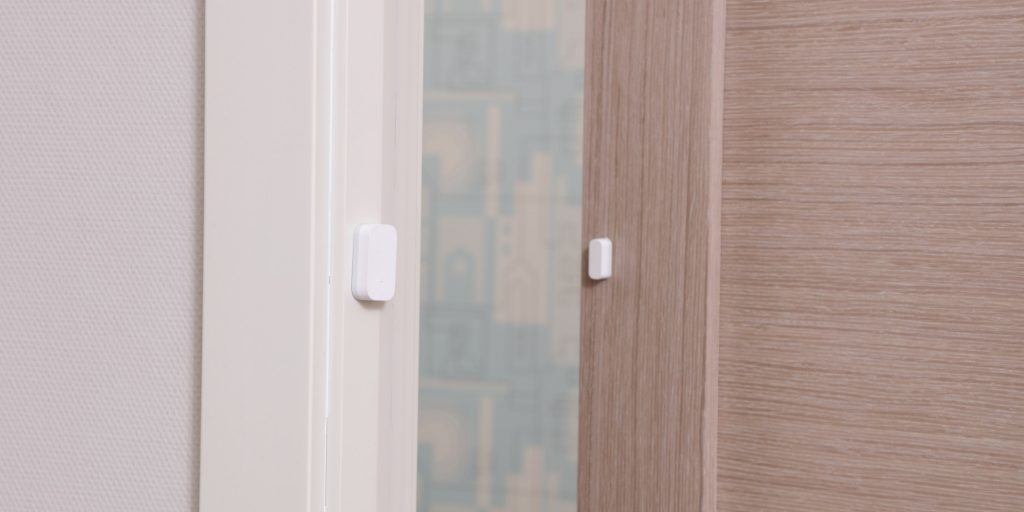I’ve rambled at length exalting the wonders of sensors that work for you in the background to bring that inexplicable magic to your connected home and one of the most common and useful types of sensors available to us is the contact sensor. We have a few different options in HomeKit with varying features and at a variety of price points and we’ve even reviewed a couple of them, but we may have found a new favorite with the Aqara Door and Window Sensor.
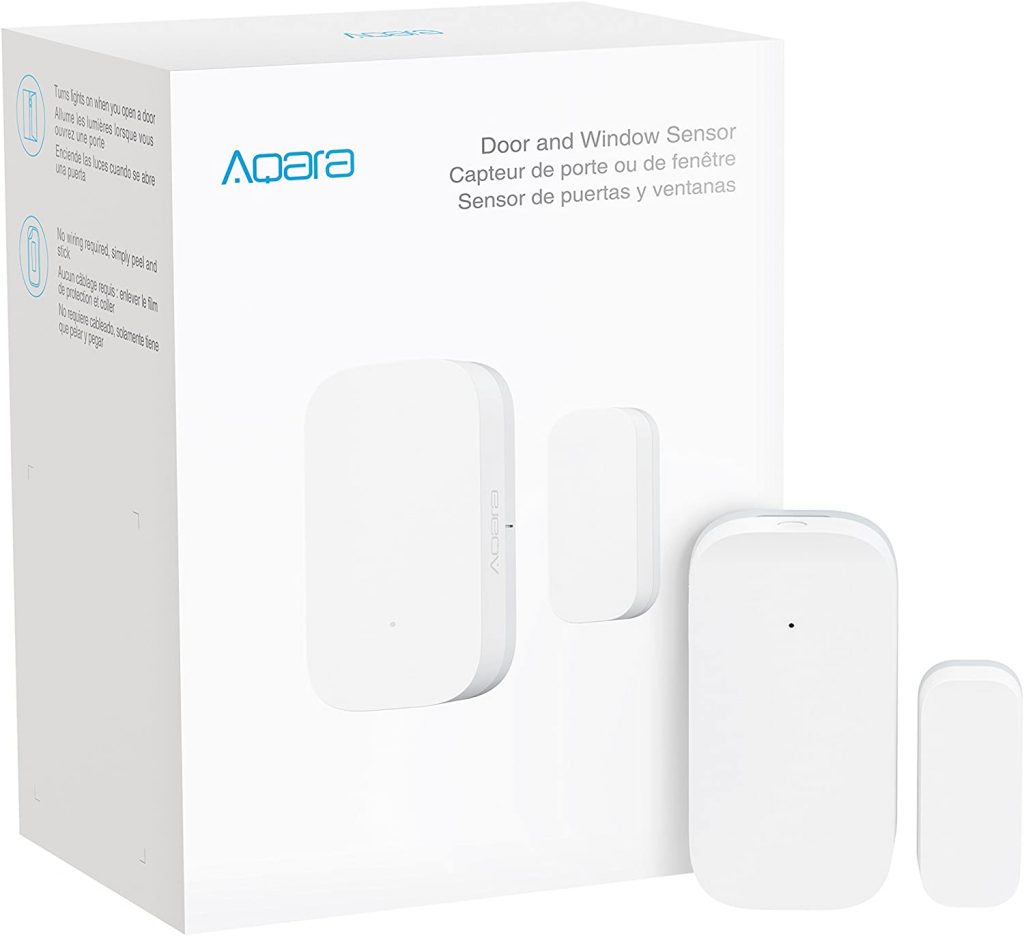
Features
- Zigbee wireless protocol requires Aqara Hub
- 22 mm (.87 inches) clearance between the main unit and magnet
- Approximate 2-year battery life
Need to Knows
- Dimensions: 1.6 X .9 X .4 inches (main unit)
- 1 CR1632 battery (included)
- Mounts with doubled sided tap
- -10℃ – 45℃ (14℉-113℉) operating temperature
- 0 – 95% RH, non-condensing operating humidity
Pros
Contact sensors are a staple of the smart home with good reason. They not only provide us with the status of our doors and windows, but also allow us to program automations based on these states. The Aqara Door and Window sensor’s footprint is impressively minimal, at least compared to the other HomeKit contact sensors we’ve reviewed. This is a ideal as aesthetically-speaking, this sensor can almost blend in to your door or window’s casing. It’s compact design also means that we can easily adapt this sensor to work in other applications like cabinetry, drawers, washing machines, or even cookie jars.
The versatility of the sensor wouldn’t be so attractive if it carried a larger price tag, but the Aqara Door and Window sensor manages to undercut most of its HomeKit competition by half if not significantly more. Granted, it doesn’t require the Aqara Hub which is an added cost, but if you consider the benefits of the hub, it’s hard to argue against this sensor. Especially when you factor in its protocol.
Finally the star feature of this door and window sensor is its response time and reliability. Since it communicates using Zigbee, the response time is super snappy and, again, surpasses the vast majority of the competition as the others tend to use Bluetooth. It’s also worth noting that when I first began testing this sensor, it and the Aqara Hub were on opposite extremes of my home which is also made of steel and concrete with no intermediary accessories to pass the signal along and the signal strength and range didn’t bat an eye. I cannot say the same for others I have tested.
Cons
Holding the tiny device, one can’t really say that it “feels” like a premium product. The plastic housing of both components is thin and lightweight and removing the battery cover can feel as if you could even break the plastic. However, considering that this device merely attaches to a surface needing only to be fiddled with once every two years for replacing the battery, I don’t think this presents any issues at all.
I’ve had a similar issue in the past with other contact sensors, but an annoyance that I found when installing this device was the material of the surface onto which you are mounting the sensor. Though the door where I initially placed the contact sensor is made of wood, the door frame is made of steel. I noticed that if I installed the larger part of the unit on the steel frame, it would falsely indicate the sensor as being closed since it uses a magnet to determine open or closed states. I simply swapped the components placing the main unit on the wooden surface of the door and all was well, though this included me using the included extra mounting adhesives.
This contact sensor also does not take differences in surface height into account unlike other door and window triggers that we’ve used. You can simply add material between the surface and either piece to make up for any gap, but this is something I would have liked to have seen addressed without resorting to a hack. Raising either piece of the sensor, or both, from a steel surface will also limit interference and help resolve the issue we mentioned before given the two components are within 22 mm of one another.
The App
Connecting the sensor to the Aqara hub, we start to see just how useful it can be. Of course, we can assigned this device to act as a trigger for the built-in alarm of the Aqara hub, but it also has some strong automation features. Unlike in HomeKit through the Aqara Home app, we’re able to use not only opened and closed actions as triggers, but also opened and closed states. Furthermore, we also have the option of setting delays of up to 24 hours after open and closed actions giving us even more flexibility in automations. This will remain on my HomeKit wish list until it becomes a reality.
Another great feature of the Aqara Home app for the contact sensor is the activity logs. We have access to fairly detailed records of the opening and closing of whatever you have the contact sensor attached to. Unlike some other devices and apps though, we haven’t the ability to export this data which I feel would be very useful in a number of cases.
In terms of HomeKit and Apple’s Home app, this is a relatively boring accessory, but this is not to say it’s not useful. We can use it open and close actions to trigger other HomeKit accessories and scenes. This is not possible to do in the Aqara Home app as HomeKit accessories and scenes outside of the Aqara ecosystem do not make their way into the Aqara Home app much like the Phillips Hue app.
Final Thoughts
I have longed been a fan of not only contact sensors, but sensors in general as a vital part of my connected home. I much prefer to analyze behavior and try to use clever automations based on sensor triggers for control rather than barking out a voice command to the ether. In the HomeKit world at least, part of this approach has been reliability and range of sensors as the stand-alone options currently available largely use Bluetooth. The Aqara lineup of accessories, including the Door & Window sensor, break with this norm providing a much more dependable and faster experience. In fact, I’m not sure I would even want to consider going back to Bluetooth for sensors. Even if this contact sensor were Bluetooth, I’d still probably make it my number one based on its price alone. For the time being, the Aqara Door and Window sensor is my contact sensor pick in HomeKit.
For more information on the Aqara Hub and the Door and Window sensor as well as their entire lineup of smart home gear, check out Aqara’s website: https://www.aqara.com/en/home.html
We use income-earning affiliate links.
We may receive a small commission on purchases made using links on this page at no extra cost to you.
